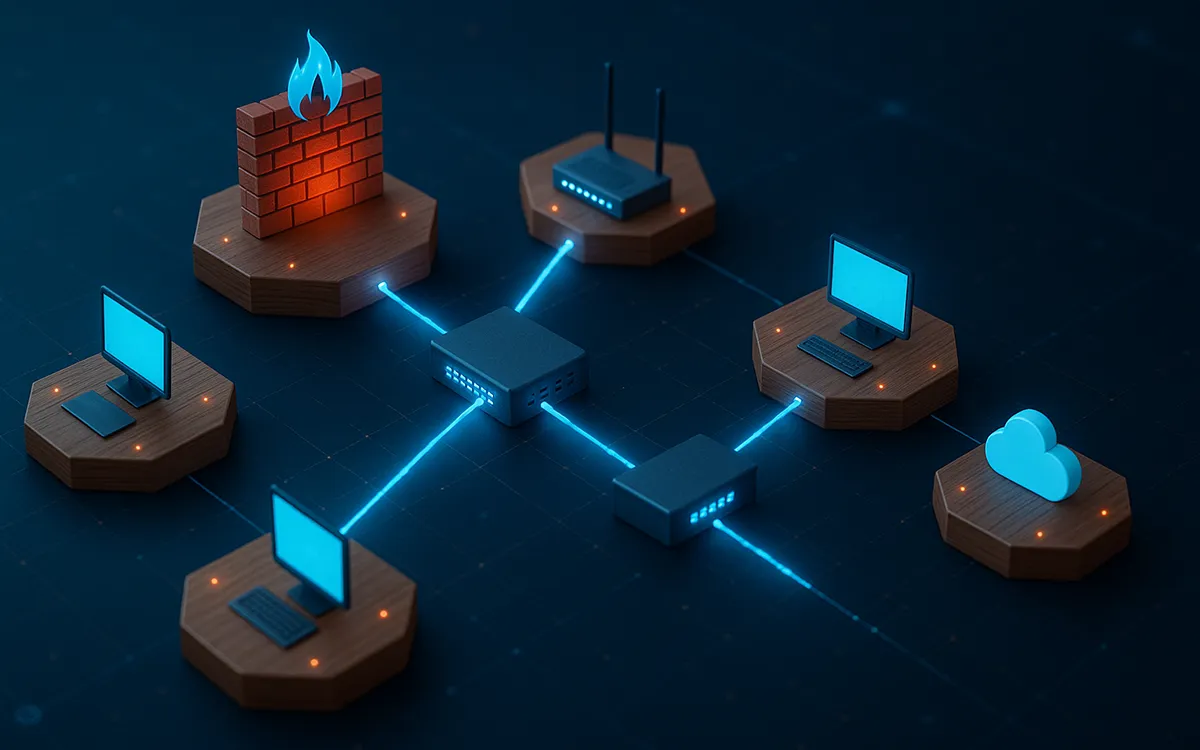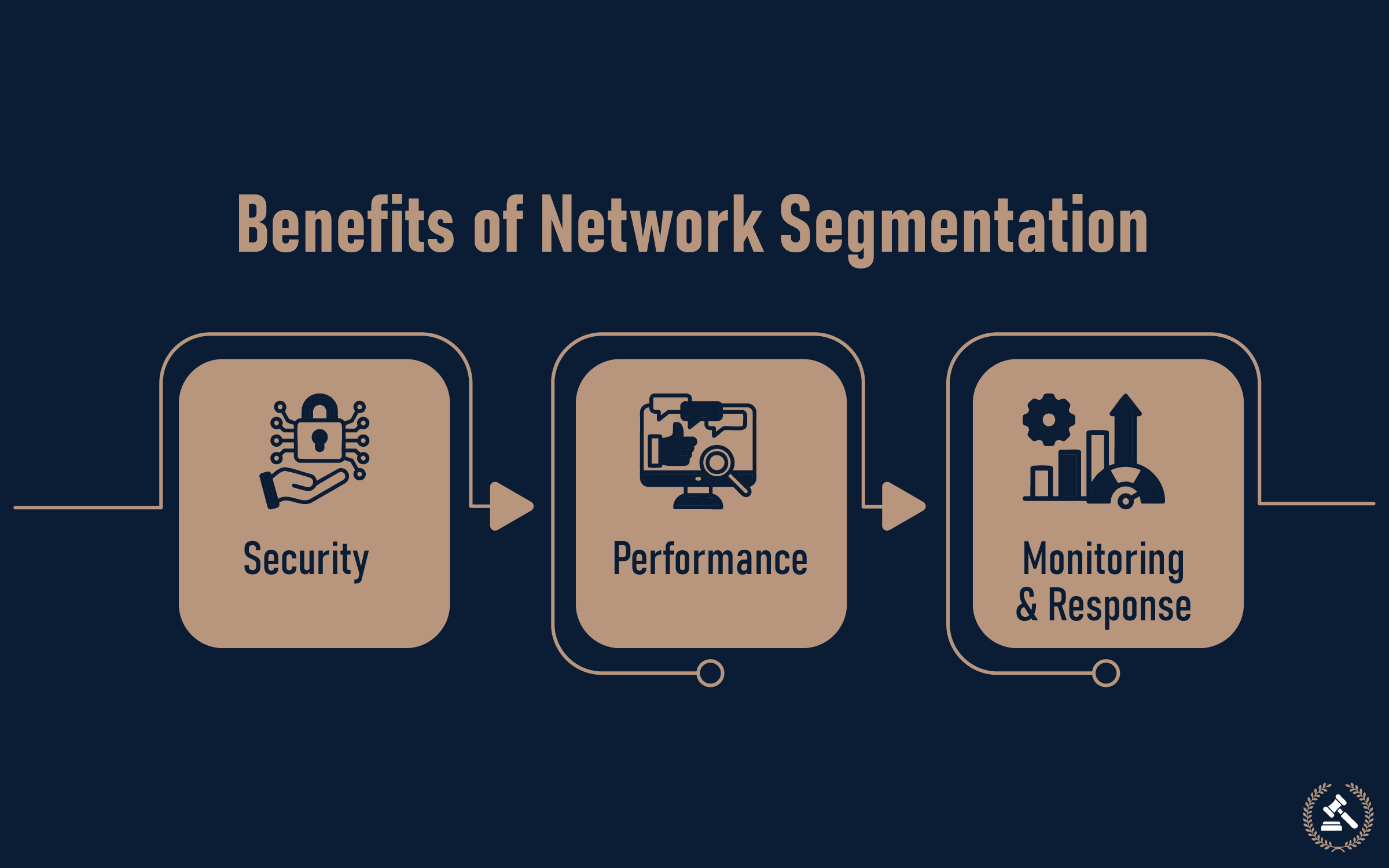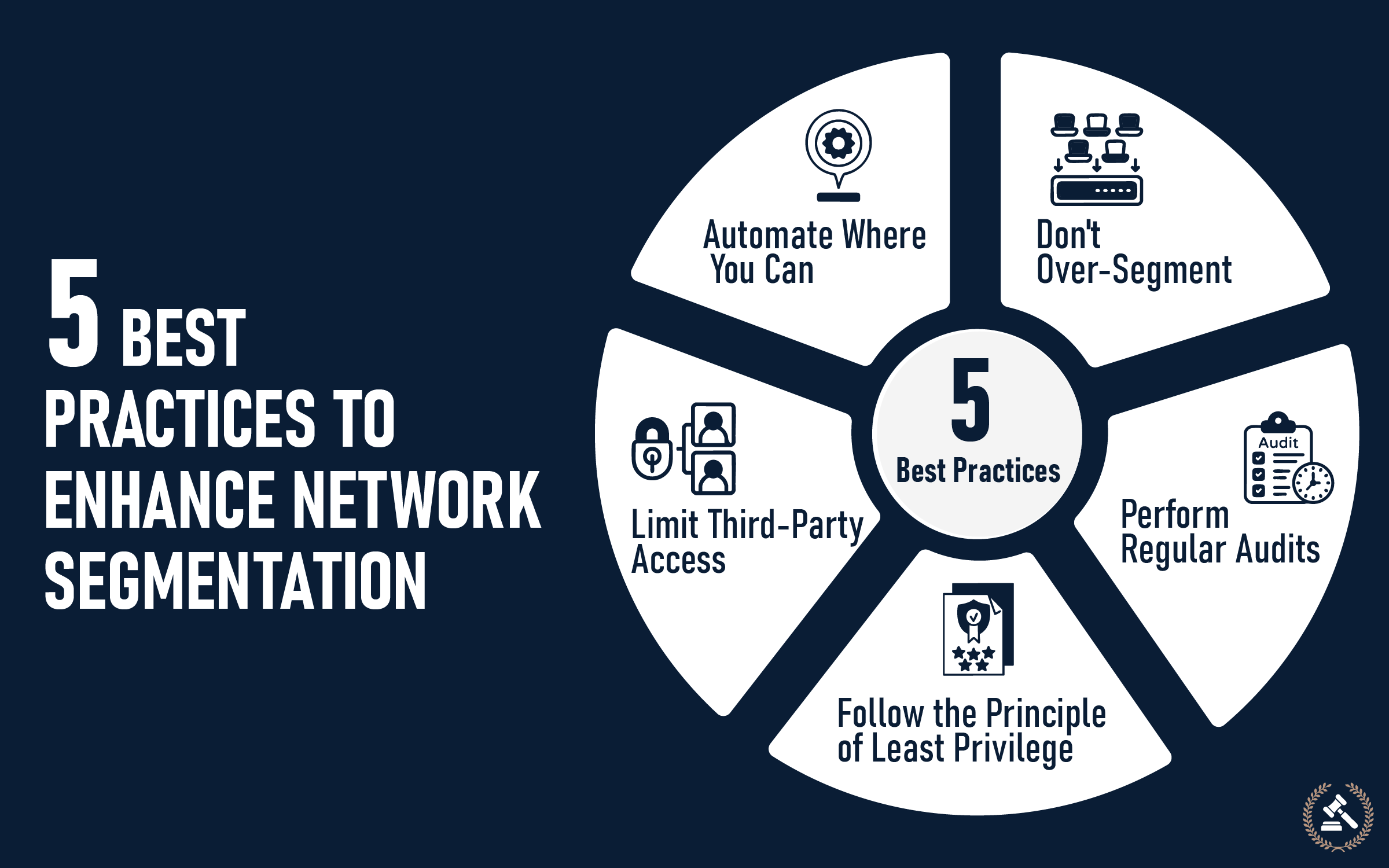
- Blockchain Intelligence
- September 16, 2025
Table of Contents
In the evolving world, high-profile individuals or companies deal with very sensitive data and information. Whether it is the health sector, finance, arts and entertainment, or even government. The authorities face the challenge of protecting their data from hackers. Day by day, hackers are getting smarter in finding ways to intrude into your system and roam around to steal sensitive information. In such a situation, it is safer to store data not just in one place but to divide it into little segments. This concept develops into what we call network segmentation.
Network segmentation is one of the most powerful tools for cybersecurity. The concept of network segmentation was shaped by companies like Cisco, VMware, and Palo Alto. It was the effort of multiple companies to fulfill the need for performance and security. In this article, you will find out more about this practice.
What Is Network Segmentation?
In simple words, network segmentation means breaking up a computer network into smaller, isolated sections. Each network segment is allotted different capacities. A specific segment can be operated for specific tasks only. That way, even if the hacker breaks into one segment, they cannot automatically access the rest. Network segmentation acts as a gatekeeper to the network, which is divided by routers and switches guarded by a firewall.
Now, let’s understand about a Firewall.
A firewall is a security device or software. Its major task is to control incoming and outgoing network traffic according to predecided terms. It is a wall between trusted networks and untrusted networks. A firewall acts as a gatekeeper to secure the systems and allow authorized access only.

Why is Network Segmentation important?
Cyberattackers are getting smarter every day. Hackers no longer just break in but they move around, searching for data like customer info, passwords, or payment details. In the presence of network segmentation, hackers get stuck in one room, and malware can’t spread across the entire network. This way, sensitive data stays protected, even if one area is compromised. Network Segmentation is important to protect your data, personal information, your system,s etc.
After knowing why network segmentation is important, it is important to know where it is viable to use. In the banks, it is used to separate ATMs, servers, and customers’ personal data. If the hacker managed to break in and get the customer’s data, the hacker still would not be able to reach the ATM pins. Network segmentation is also used in hospitals, schools and universities, manufacturing units, fintech companies, etc. In the era of start-ups, even small businesses can benefit from it!
5 Types of Network Segmentation
Understanding all the types of network segmentation helps to choose which one is best for you. In all, there are five types of network segmentation. Namely, VLAN, Firewall-based segmentation, SDN segmentation, Air gapped networks, and Microsegmentation.
1. VLAN
A Virtual Local Area Network or VLAN divides the main single network into multiple parts. Unlike physical segmentation, it works virtually. Each VLAN creates a broadcast domain. Hence, the same VLAN can communicate with each other. In the absence of a VLAN, every device connected to a switch belongs to the same broadcast domain. A broadcast packet sent by one machine is received by all devices, leading to congestion and potential security risks.
2. Firewall-based Segmentation
It entails applying firewall rules and policies to manage the types of traffic that are allowed to flow between various segments of a network. However, they come with considerable complexity and cost. Managing numerous rules across multiple firewalls and devices requires careful planning, regular updates, and ongoing monitoring.
3. SDN
SDN divides the control plane (intelligence) from the data plane (traffic handling). This allows you to manage traffic flow in your network centrally via software or APIs, rather than configuring each device individually. In traditional networks, each switch or router has both control and data planes built in, which means administrators must configure each device individually. This makes large-scale changes, policy updates, or troubleshooting complex and time-consuming.
4. Air-gapped Networks
An air-gapped network is a type of system that is completely isolated from all other networks, meaning it has no wireless, wired, or digital communication links to external systems. As a result, assets are protected from malicious cyber activities.
5. Microsegmentation
Microsegmentation is a security technique that divides a network into smaller, more granular segments, often down to the level of individual workloads or applications. This allows for more precise security policies and access controls to be applied, enhancing security and limiting the impact of potential breaches.
Benefits of Network Segmentation

-
Providing security to the network
Network segmentation limits the movement of potential threats, ensuring that even if one segment is compromised, the rest of the segments stay protected. Isolating sensitive systems and applying targeted security policies reduces the attack surface and improves monitoring.
Network segmentation minimizes the spread of an attack. It allows for security policies, ensuring sensitive resources are isolated. This makes compliance with industry regulations more manageable and strengthens data protection.
-
Enhancing Performance of Each Segment
When the network is divided into segments, each segment consumes only the required amount of connectivity. Network segmentation helps you gain control over network traffic. It reduces network congestion, which leads to better network performance.
-
Monitoring the traffic & Response to unusual activities
An effective cybersecurity not only prevents threats but also involves constant monitoring and response processes to mitigate them. As a result of network segmentation, we have fewer hosts per subnetwork, minimize local traffic per sub-network, and limit external traffic only to that designated for the sub-network.
5 Best Practices to enhance Network Segmentation
In order to implement network segmentation practice, the following are the five points to be considered. The practices will help you bring out the best potential of your system.

1. Don’t Over-Segment
Over-segmenting can decrease your overall network visibility and make management difficult, but under-segmenting keeps your attack surface broad and hurts your security posture.
2. Perform Regular Audits
Network segmentation will only improve your network security if you continually audit your segments for vulnerabilities, tight permissions, and updates. If you know there are no exploitable gaps in your coverage, you’ll be one step ahead of hackers.
3. Follow the Principle of Least Privilege
By applying the principle of least privilege across all your segments, you guarantee your users, network administrators, and security team that access is only granted when necessary. Least-privileged access is fundamental for zero-trust network access.
4. Limit Third-Party Access
Granting third parties access is already risky, so it’s important to do so only where it’s needed, especially if you’re granting it to multiple segments. Carefully considering new permissions is key to maintaining a good network security posture.
5. Automate Where You Can
Besides the benefits of automation in general (such as improved visibility, security, and MTTR), automating network segmentation allows you to quickly identify and classify new assets and data, which is another segmentation best practice in itself.
How to Prevent the Attack and Enhance Your System It
The larger the network, the larger the canvas. Dividing the network into small segments protects it and enhances performance. Hence, network segmentation is a way to isolate an active attack. When networks are divided into logical sections, administrators can quickly identify where issues occur.
This results in easier management and troubleshooting. As the organization grows, adding new segments is easier than expanding one large network. This flexible structure supports long-term growth and adapts to changing business needs
Every business has different vulnerabilities, which is why some security services are tailored to your requirements, ensuring a proactive and resilient defense strategy. For example, a hospital's medical devices can be segmented from its visitor network so that medical devices are unaffected by guest web browsing traffic.
FAQs (Frequently Asked Questions)
Network segmentation is the practice of dividing a computer network into smaller, isolated segments or subnets. Each segment can have its own security controls, access permissions, and traffic rules.
Network segmentation is powerful because it limits attack spread, protects sensitive data, improves incident response, enhances compliance, reduces performance impact etc.
Physical Segmentation, Virtual LAN (VLAN) Segmentation, Firewall Segmentation, Software-Defined Networking (SDN), Zero Trust Segmentation (Microsegmentation)
Setting up VLANs on a single switch or router is relatively straightforward. Complex for large enterprises requires detailed planning, mapping of traffic flows, and integration with security tools.
Yes and often more than they realize. For example, a small retail store can isolate its point-of-sale (POS) systems from guest Wi-Fi, a startup can separate development environments from corporate email and HR systems.